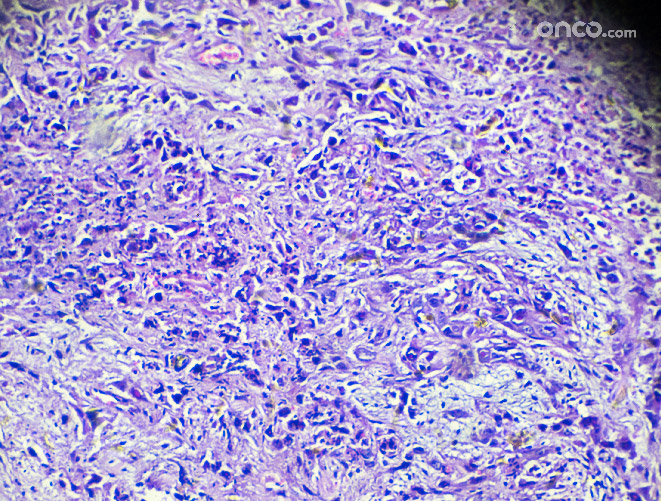What is nasopharyngeal cancer?
Nasopharyngeal cancer, also known as nasopharyngeal carcinoma (NPC), is a rare malignant tumor that arises in the epithelium of the nasopharynx. The nasopharynx refers to the the upper part of the throat (behind the nose). It is a part of the pharynx (throat) which is made up of three separate segments: the nasopharynx, the oropharynx, and the hypopharynx.

The incidence of nasopharyngeal cancer varies across different geographical locations, and is more commonly seen in regions close to Southern China such as Hong Kong. It is extremely rare in the United States and in western Europe. The incidence of nasopharyngeal cancer is 2-3 times higher in men, as compared to women. The average age at which patients get diagnosed with nasopharyngeal cancer in high risk areas is 50-60 years. Distant metastasis is observed in almost 5 -10% of all nasopharyngeal cancer patients with bone, lung and liver metastases being the most common forms of cancer spread.
What are the risk factors for nasopharyngeal cancer?
The three most important categories of risk factors for nasopharyngeal cancer are viral infection, environmental factors, and hereditary causes (genetic predisposition).
The most common risk factors for nasopharyngeal cancer are listed below:
- The Epstein Barr virus (EBV) plays an important role in the development of nasopharyngeal cancer
- Some dietary factors which are associated with nasopharyngeal cancer are the cooking of salt-cured food, which releases nitrosamines that can contribute to the development of NPC
- Early childhood exposure to salted fish
- High consumption of preserved or fermented foods
- Use of Chinese medical herbs, which may reactivate EBV virus from a dormant state
- Genetic factors can also contribute to the development of nasopharyngeal cancer. NPC has been associated with certain haplotypes.
- The Human papillomavirus (HPV) was detected in a small number of patients in low risk areas
- Smoking is a known risk factor for nasopharyngeal cancer. It acts by reactivating the EBV virus from a dormant state.
What are the common signs and symptoms of nasopharyngeal cancer?
The most common signs and symptoms of nasopharyngeal cancer include swelling in the neck, nasal blockage, nasal bleeding, nasal discharge and serous otitis media (ear infections). Some patients may present with ear pain, ear discharge, nasal tone of voice, ringing sensation in the ear and gradual loss of hearing.
Other signs of nasopharyngeal cancer include:
- Persistent headache
- Double vision
- Facial numbness (This can occur when there is cranial nerve involvement in the disease. The most common cranial nerves involved in nasopharyngeal cancer are CN III, V, VI and VII.)
How is nasopharyngeal cancer diagnosed?
The diagnosis of nasopharyngeal cancer is a detailed process. This involves a detailed evaluation of the patient’s medical history, followed by physical examinations that include examination for cranial nerve involvement.

The following steps are involved in the diagnosis of nasopharyngeal cancer:
- Routine lab investigations such as complete blood-work (CBC), liver function tests, and renal function tests are recommended
- Biopsy of the tumor, guided with endoscopy, is performed to confirm the diagnosis
- Computerized tomography (CT) scan or an MRI (magnetic resonance imaging) scan of the head and neck region is performed to understand the extent of the disease
- MRI is preferred over CT scan since it better delineates the involvement of soft tissue areas and cranial nerves
- In cases of high probability of distant metastasis (spread) to other organs, an FDG PET CT scan is commonly recommended
- Other imaging studies involved in the diagnosis of nasopharyngeal cancer include routine chest X-rays to rule out the possibility of lung metastasis
Treatment of nasopharyngeal cancer
The treatment of nasopharyngeal cancer depends on the stage at which the patient’s cancer has been diagnosed, general health condition of the patients, and risk of metastasis to nearby or distant organs.
Treatment of early stage nasopharyngeal cancer
The term ‘early stage nasopharyngeal cancer’ applies to patients who have been diagnosed at stage 1 or stage 2. In such cases, the mainstay of treatment is radiation since nasopharyngeal carcinoma consists of radiosensitive tumors. Also, the anatomic location of tumors in NPC makes surgical resection extremely difficult.
Highly conformal radiation therapy techniques such as IMRT (intensity modulated radiation therapy) can provide better disease control with fewer side effects. External beam radiation therapy (EBRT) is given with a total dose of 66Gy to 70Gy, once daily, 5 times a week over six to seven weeks along with weekly concurrent chemotherapy.
Surgery plays a limited role in such cases as the location of nasopharynx is not surgically feasible for excision. Neck dissection can be performed in patients who exhibit residual forms of cancer in the neck after completing radiation treatment.
Treatment of advanced stage nasopharyngeal cancer
For patients whose cancer has advanced (progressed) beyond the nasopharynx area (in terms of the size of the tumor or regional spread), the mainstay of treatment is concurrent chemo-radiotherapy, similar to that offered to patients in early stage nasopharyngeal cancer. The role of adjuvant chemotherapy has not been standardized for nasopharyngeal cancer patients.
Treatment of metastatic nasopharyngeal cancer
Nasopharyngeal carcinoma contains tumors that are highly sensitive to chemotherapy. Hence, systemic chemotherapy is administered to NPC patients whose cancer has metastasized.
Platinum-based regimens are usually administered as the first line chemotherapy agents. In cases where cancer continues to progress after initial chemotherapy, molecular targeted therapies, immunotherapy treatments, and second line chemotherapy are considered.
Treatment of recurrent nasopharyngeal cancer
The recurrence of nasopharyngeal cancer can be classified as either locoregional (local recurrence) or distant recurrence.
In locoregional recurrence, a complete work-up is performed in order to rule out the possibility of any distant metastasis. Treatment options for locoregional recurrence include salvage surgery and re-irradiation.
The treatment of distant recurrence in nasopharyngeal cancer is similar to that of metastatic disease. This includes systemic chemotherapy with platinum-based regimens, in addition to molecular targeted therapies and immunotherapy agents.
Survival rates for nasopharyngeal cancer
The treatment outcomes in nasopharyngeal cancer patients depends on stage of the disease.
- The five-year survival rate across stage 1 and 2 patients is 90% and 84% respectively
- The five-year survival rate across stage 3 and 4 patients is 75% and 58% respectively


